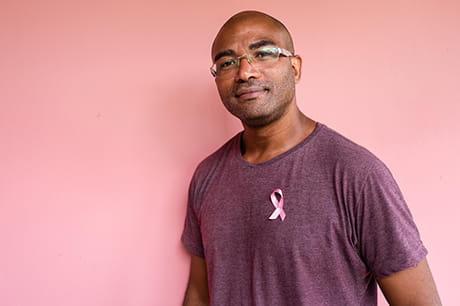Mammogram vs. breast ultrasound: What’s the difference?
These common types of breast imaging can detect breast cancer or other breast conditions. Know what they can tell you — and when you need one.
When we think breast health, most of us think mammograms. As it turns out, there’s more to breast cancer screening — including two types of mammograms and a whole other method called breast ultrasound. Need any of these screenings? Knowing what to expect can make the process a little smoother.
What is a mammogram?
Mammograms are essential tools for detecting breast cancer or changes in breast tissue.
There are two types of mammograms:
Screening mammogram. The most common type. Women need one yearly starting at age 40. Images are sent to a radiologist who reports their findings, usually within a few days.
Diagnostic mammogram. Done as a follow-up to a screening mammogram. Results are read in real time.
During a mammogram, you’ll stand still in front of a specialized X-ray machine. A technologist will position one of your breasts on the plate. Another plate compresses it down, making the tissue more uniform.
“Compression gives the breast tissue the same size and thickness, making it easier to see all the tissue evenly,” says Gina Markle, radiology team leader at Geisinger Healthplex Woodbine and Mobile Mammography.
While your breast is compressed, the technologist will take pictures from different angles. Then they’ll repeat the process on the other breast. The procedure may feel a little uncomfortable, and your breasts may be tender afterward.
After making sure the images are clear and don’t need to be redone, your tech will send them to a radiologist. They’ll examine the pictures and look for lumps or masses. “Abnormal or inconclusive results may require more extensive testing, like a diagnostic mammogram or a breast ultrasound,” Markle says.

What is a breast ultrasound?
A breast ultrasound is a specialized imaging test that allows a technologist to see inside your breasts.
“Unlike a mammogram, which uses X-ray, an ultrasound uses soundwaves to create moving images of breast tissue,” says Helene Derr, ultrasound team leader at Geisinger Medical Center.
During the procedure, an ultrasound technologist applies gel to a wand. Then they’ll move the wand across your breasts, one side at a time, to capture images.
Your provider may suggest a breast ultrasound for a few reasons, like:
- Determining if a lump is a cyst or a possible mass
- Getting clear images of dense breast tissue
- Taking a closer look at a spot that showed as abnormal on a mammogram
- Performing a needle biopsy
- You’re pregnant or younger than 25
After your ultrasound, the images are sent to a radiologist, who reviews and interprets them.
“If the radiologist finds a suspicious lump or mass, they may recommend a biopsy,” Derr says.
What happens if you need more testing?
If your mammogram shows anything abnormal, stay calm. Often, it may be that you have dense breast tissue. The radiologist will determine if you need more imaging. And a diagnostic mammogram or ultrasound can confirm if there’s cause for concern. By getting regular breast cancer screenings, you can stay on top of your breast health.
Next steps:
What is a 3D mammogram?
Getting your first mammogram? Here’s what to expect.
Your best breast health starts here

